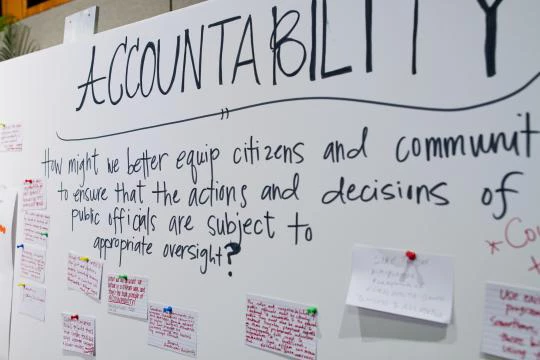
The nature of the workforce is changing. By 2030, 50% of today’s jobs will be redundant. In the United States, 47% of current jobs are predicted to be automated. Participating in the workforce of the future will require the ability to innovate through technology. Since Intel is seeking to redefine what it means to be an innovator by expanding who has access to technology skills and experiences, the annual World Bank Youth Summit in Washington DC was an ideal venue to engage with young entrepreneurs.
On December 4th – 5th, the World Bank Group welcomed 400 youth from over 100 countries to the 2017 event focused on Technology and Innovation for Impact and included a competition in which six finalists pitched their ideas to attendees and expert judges. I was graciously selected by the Youth Summit to participate as an expert judge. Finalists were selected from more than 500 applicants and were limited to seven minutes to pitch their ideas making sure to cover the following criteria:
- Clarity, scope, and relevance of the problem and of the proposed solution
- Innovation and originality
- Feasibility of implementation
- Potential for impact
The finalists’ projects ranged from concept to implemented and included weather insurance for farmers in Mali, e-clinics for women in Pakistan, energy reform using blockchain in India, mobile application for charity in South Africa, a platform to formalize the domestic worker sector in Southeast Asia, and the collection of vital statistics in neonatal health services in Nigeria.
Following each pitch, judges were allotted six minutes to ask questions to clarify their understanding and/or request additional information to assist in the scoring process. In the end, e- clinics for women in Pakistan, Sehat Kahani, presented by Makkiya Jawed was the lead finalist. She shared the problem statement and solution through stories of thousands of women without reliable healthcare in communities where women doctors are already present. She also presented an interesting twist, approaching the health care problem from both the demand and the supply side, connecting forced out of work female doctors (women forced to make the choice between practicing medicine and having a family) to underserved female patients in middle and low-income markets through an e-health hub model providing access to quality healthcare.
Although, my day to day work is focused on empowering youth to innovate in their communities I was once again inspired by the passion, dedication, and results of young people towards solving tough problems. When provided education, technology skills and support, innovation possibilities lead by youth are boundless. These young entrepreneurs are on their way to changing the world and have re-energized me as I returned to work on Intel’s mission to ensure all young people are empowered to do the same.


Join the Conversation